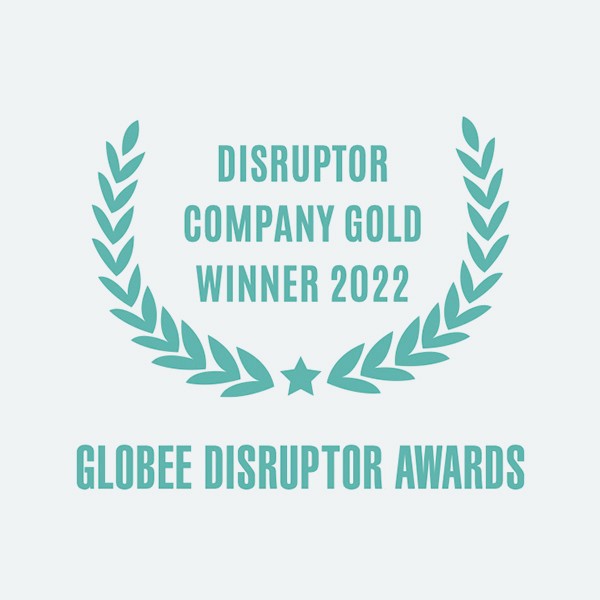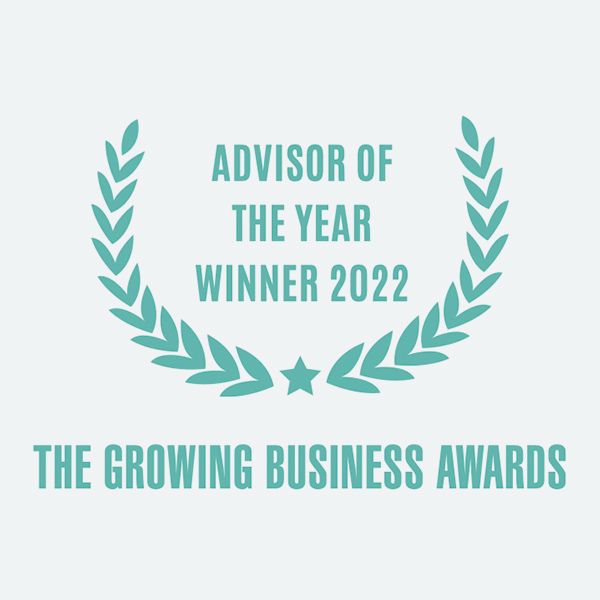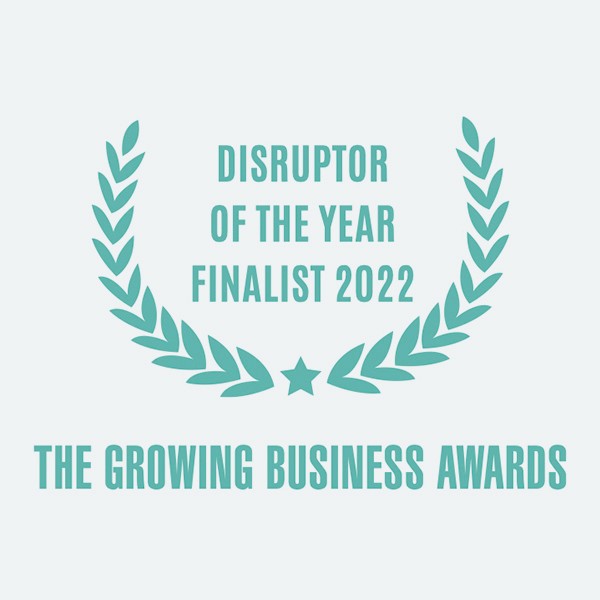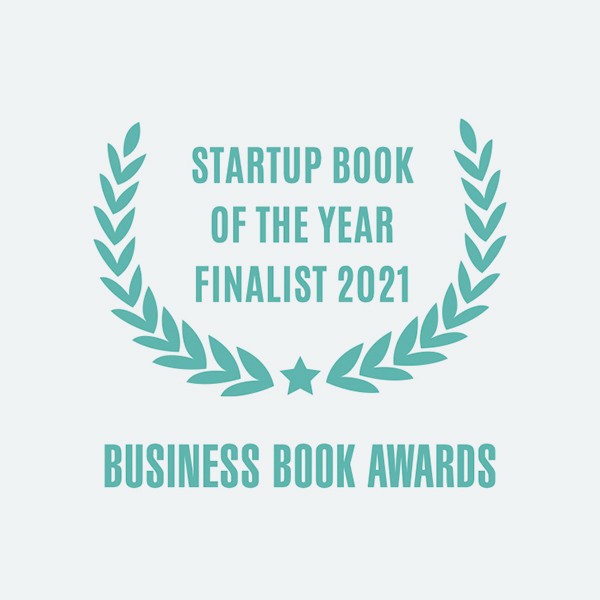

18 types of minimum viable product (MVP) that won’t break the bank
14 June 2018
If you’re a business professional or an entrepreneur, you will already know how crucial it is to develop a minimum viable product (MVP) before launching a full-fledged product. However, with so many types of MVPs out there, it can be challenging to know which one to choose for your specific product idea.
In this article, we’ll explore the various types of MVPs, their definitions, and the situations where they are most effective. We’ll also provide examples of successful MVPs to help you understand how they can work for your product. Whether you’re working with a small or large budget, this guide will help you choose the right type of MVP that aligns with your goals and resources. So, let’s dive in and explore the world of MVPs!
Jump to the following sections:
- What is an MVP?
- Why is an MVP important?
- Example of MVP
- The two types of MVP
- Types of MVP: Low-Fidelity
- Types of MVP: High-Fidelity
- Choosing the right type of MVP for your product idea
- Examples of MVPs
- Minimum Viable Product (MVP) FAQ
What is an MVP?
A minimum viable product is an idea or product designed with only a basic set of features to help you test your ideas in your chosen market. It’s a fast, cost-effective way to test the demand for your product before it goes to market, and will enable you to gain popularity with an audience of users before you create the full project.
Why is an MVP important?
Designing a minimum viable product can seem like a laborious process, but it will give you gain valuable feedback and analytical information to improve your idea and will help you better understand your audience.
Some startups get put off by the idea of launching an unfinished product, but one of the main problems we encounter with startups is that they don’t truly know who their customer is, or exactly what they want. So they waste a lot of time and money building a product that has features no-one wants or needs.
Many startups fail because they jump ahead and create a final, full feature, product and deliver it straight to market. The only way to progress in a startup is through learning. Launching a full feature product is a waste because it won’t actually help you learn.
Your Minimum Viable Product is the cheapest and smartest way you can start learning and experimenting and allows your customers to use your product.
Example of MVP
Here’s a great example of an MVP from DropBox:
DropBox is a file synchronisation service with its current value standing between $5 and $10 billion dollars. DropBox makes it possible for you to edit files on your desktop and seconds later updates that file on all of your other devices, but they didn’t dive straight in and release the product straight away. Their Minimum Viable product idea was to create a video. The video only lasted for three minutes and demonstrated the synchronisation process from start to finish, but there was more to it. The video was full of tech humour intended to appeal to early adopters, which worked. The video drove hundreds of thousands of people to the website, almost overnight, and increased their beta sign-ups from 5,000 to 75,000.
The two types of MVP
There are two main types of MVP, Low-Fidelity MVPs and High-Fidelity MVPs.
In summary:
- Low-fidelity MVPs are quick and cheap to create, and they often involve creating a basic prototype using simple materials like paper, sketches, or wireframes. They are intended to test the core features of the product and gather feedback from users. They are an excellent way to validate a product idea and make sure that it meets the needs of the target audience before investing time and resources into building a more refined product.
- High-fidelity MVPs, on the other hand, are more advanced prototypes that have a higher level of design and functionality. They often involve building a working prototype that closely resembles the final product, with more attention paid to user experience and design. High-fidelity MVPs are more expensive and time-consuming to create, but they provide a more accurate representation of the final product and can help businesses get more detailed feedback from users.
Which one you choose will depend on where you are on your journey. Let’s break them down:
Low-Fidelity MVPs are used to:
- Gain a better understanding of your customer’s problems
- Check how valuable a solution to this problem may be for customers
- Investigate as to whether or not the problem is worth solving
- Explore what kind of solution would be most effective for the customer
High-Fidelity MVPs are used to:
- Find out how much customers are willing to pay for your product
- Find early adopters who will be your first customers and help spread the word about your product
- Help you define and optimise your marketing strategy, such as your value proposition, call to action and communication channels
- Identify the best potential growth strategies
There are a few things to consider when choosing which type of Minimum Viable Product to use, such as risk, timescale and cost. Before you start your MVP project, ask yourself these questions:
- What could your biggest potential risk be, and how could you avoid it?
- How much time do you have to build your MVP and wait for reliable results?
- What can you afford? Think about the most effective way to spend your money. Don’t spend too much on your first tests. Remember you’re not trying to make your customer happy at this stage, your main goal is to learn.
Let’s now look at 18 types of Minimum Viable Product that you can use to test your idea is profitable and scalable.
Types of MVP: Low-Fidelity
1. Customer interview
A customer interview isn’t a sales pitch for your product, it’s an honest unscripted interview. It’s a great way to find out information about your product and the problem you’re trying to solve. Think about asking questions around Price, Product, Promotion and Purchase behaviour to get a well-rounded understanding of your audience’s requirements.
2. Blogs
These are an easy way to validate ideas within your target market while using minimal effort. It costs very little to set up a blog, and it gives you a great form of two-way communication between you and your future customer. Of course, you’ll need to figure out how to drive traffic to your blog, but in doing so you will start to learn about the best channels for marketing your product later on down the line.
3. Forums
If you are trying to gain a better understanding of your customer’s problems, existing forums dedicated to the subject can be a great way of learning directly from potential customers. You can ‘scrape’ forums for information and data that’s already been discussed, or you can join the forum and start interacting directly with customers.
4. Landing Page
A landing page is the first thing customers come to after clicking a link on a piece of your marketing communication, for example, a Facebook ad, e-mail or blog post. It’s a great opportunity to promote the features and benefits of your product and validate your Value Proposition, proving your brand communication.
Buffer is a great example of this. Buffer is a social media management platform where you can schedule your social content, and it will post it for you at a date and time of your choosing. Before going ahead with their idea, and building the app, they created a really simple landing page to see if there was any demand for it. The landing page described what it did, and gave their customers an option to click through to plans and pricing. Any customer who clicked through would be taken to a page saying “Hello, you caught us before we were ready” and then the customer would be invited to leave their details so they could be informed when the website was up and running.
5. Split Testing
This is a very effective way to measure any changes you make to your product or marketing. There are so many analytical tools to choose from which can tell you how your audience reacts to various changes, be it your website, product design, call to action, pricing, or other elements. If you want to test two versions of something, split testing allows you to compare the two and determine which one performs best.
6. Explainer Video
An explainer video is a short, simple video explaining the features and benefits of your product and why people should buy it. Video has become an increasingly popular Minimum Viable Product and it’s a very effective and simple way for people to find out about your product. You can use the video to generate interest in your idea and determine the traction you may expect.
7. Paper Prototypes
Rather than jumping into design and development, paper prototypes require a lot less time and effort. Typically they are sketches of a user interface. They give users an opportunity to experience your product before it exists – and they can even get involved in shaping the UX and features. This method is a great way to test your product because it can be easily and quickly modified.
8. Ad Campaigns
Are a good way of running market validation surveys. With platforms like Facebook and Google, you can choose demographics for a specific target audience and you can discover which aspects of your product are most appealing. You can also run split tests using this method.
9. The ‘Fake Door’
This MPV works by getting your customers to sign up for a product or service that isn’t actually available. It will help you measure the interest by seeing how many people try to access it. For example, you could have a landing page with a call to action button, and when your visitor clicks on it, it could take them through to a page saying “Coming Soon!”. The number of visits to that page gives you an idea of the number of downloads or orders you would have received over a given period.
10. Audience building
By building an audience before you create a product you can gain a good insight into whether there’s any interest or demand around the problem you are going to solve. It’s also a very simple low-cost approach. If you get good results and decide to test a High-Fidelity MVP, you will already have an engaged audience (who could participate in tests, interviews and questionnaires) which will all contribute to helping you produce a valuable product.
11. Micro-Survey
This type of survey usually gets a much better response rate because it’s normally only one or two questions. By keeping your survey short and sweet you can expect a much more reliable answer. For example: If you have a website you could use a pop-up tool and offer some kind of giveaway if your visitor performs the action then they would have answered a simple question. Make sure your questions are specific but open-ended. See our article 24 lead generation tools to grow your business for some ideas of what giveaways you can use.
Types of MVP: High-Fidelity
12. Digital Prototypes
These are typically wireframes, mock-ups and prototypes. Rather than jumping straight into high-end designs and UX, digital prototypes are used to save time and money in development and are very effective in demonstrating the functionality of your product. They make usability and functionality issues much easier to spot and resolve early on before you’ve invested in a lot of front-end design and development.
13. 3D Models
This MVP will give your prototype a more professional feel, but it will come at a cost and will be more expensive than a paper one. This might be something worth considering if you’re building a product that will be manufactured.
14. The “Wizard of Oz” MVP
This MVP is where you essentially put up a front that gives your potential customers the impression you have a real working product and they’re experiencing the real thing. This MPV requires a lot more time and effort but it’s a very effective way of checking if you have a desirable product or service, before you build it. With this approach, you use a human resource to replicate what your proposed technology will do. This helps you prove the interest in your product while keeping technical costs low.
15. The “Concierge” MVP
A concierge MVP is often confused with the “Wizard of Oz”. However, rather than using a human resource to replicate an algorithm, the customer knows they are receiving a human service. For example, before being an automated investment service, Wealthfront would manually create and deliver investment plans face to face, which wasn’t very scalable. Concierge MVPs should be used when you’re not exactly sure of the solution, whereas a “Wizard of Oz” MVP should be used when you have a clear understanding of the solution and are testing the market.
16. The “Piecemeal” MVP
Falls in-between the “Concierge” MVP and the “Wizard of Oz” MVP. With a Piecemeal MVP, you use existing tools and services to deliver a functioning product to your customers. Typically, you use a number of existing technologies (that don’t always integrate so well together) so mean more human resource is required to manage the process. Using existing services will save you time and money by building your own technology and infrastructure.
17. Crowdfunding
This is like getting pre-orders for your idea. It allows you to raise money to create your product, while also testing the demand. If you want to be successful at Crowdfunding it’s a good idea to create an explainer video about your product. This type of Minimum Viable Product is a great way to see if people want to buy your product or not. If it turns out to be a success you will raise money in the process, and generate a following of early adopters who could even spread the word about your product. This approach is used for all types of products from board games to speciality food and drink products.
18. Single Featured MVP
Often it’s more effective testing just one essential feature of a product. A single featured Minimum Viable Product prevents users from getting distracted by other features and allows you to gain a really clear understanding of one specific problem or solution. It’s also more cost-efficient than building a product with a lot of features no-one wants.
Choosing the right type of MVP for your product idea
Choosing the right type of MVP for a product idea can be challenging, but there are several ways to ensure that businesses make the right choice. The first step is to define the product idea and determine the main objective of the MVP. This involves understanding the target audience, their needs, and the problem that the product solves.
Once the objective is defined, businesses can choose the type of MVP that aligns with their goals and resources. For instance, a business with limited resources can choose a low-fidelity MVP like a landing page or explainer video, while a business with more resources can choose a high-fidelity MVP like a prototype or piecemeal MVP.
Another way to ensure the right choice is to test the MVP with a small group of users and gather feedback before investing in the final product. This enables businesses to validate their product idea and make necessary changes before building the final product.
It’s also essential to be open to pivoting the product idea if the MVP fails to meet the needs of the target audience, and this requires an open mindset and a willingness to embrace change.
Examples of MVPs
-
Examples of concierge MVP
-
-
- Zappos started as a Concierge MVP where the founder offered to buy shoes from local stores and deliver them to customers.
- Food delivery apps like UberEats, GrubHub, and DoorDash started by using the concierge model, where delivery drivers were hired to pick up food from restaurants and deliver it to customers.
-
-
Wizard of Oz MVP
-
-
- Airbnb used a Wizard of Oz MVP by creating a simple website that advertised a “bed and breakfast” service, even though they didn’t have any actual rooms to rent out.
-
-
Examples of Landing Page MVP
-
-
- The creators of Dollar Shave Club used a landing page MVP to validate their idea before building a website or ordering inventory.
- Buffer used a landing page MVP to test demand for their social media scheduling tool before building the actual product.
-
-
Examples of Crowdfunding MVP
-
-
- Oculus used Kickstarter as a crowdfunding MVP to raise funds and gauge interest in their virtual reality headset before building a commercial version.
- Pebble used Kickstarter to validate demand for their smartwatch and raise funds for production.
-
-
Examples of Piecemeal MVP
-
Examples of Explainer Video MVP
-
-
- Crazy Egg used an explainer video MVP to test the demand for their heat mapping software before building the actual product.
-
-
Examples of Smoke Test MVP
-
-
- Groupon used a smoke test MVP to test demand for their daily deal service by creating a simple landing page and measuring how many people signed up for the service.
- Bonobos used a smoke test MVP to test demand for their men’s clothing line by creating a simple webpage and measuring how many people clicked on the “buy now” button.
-
-
Examples of Email MVP
-
-
- TheSkimm used an email MVP to test demand for their daily newsletter before building a website or developing an app.
- The Hustle used an email MVP to validate demand for their daily business newsletter before building the actual product.
-
-
Examples of Prototype MVP
-
Examples of Paper Prototype MVP
Minimum Viable Product (MVP) FAQ
Why is it important to create an MVP before launching a full product?
Creating a minimum viable product (MVP) before launching a full product is essential. It allows businesses to test their product ideas with real users and gather feedback to refine and improve their product. Releasing an MVP quickly determines whether the product solves a real problem and whether there is a demand for it in the market. It also reduces risks by avoiding sunk costs and pivoting the product direction if necessary.
MVPs also get the product to market faster by focusing on the core features of the product and avoiding unnecessary development of non-essential features. By incorporating user feedback, businesses can identify areas of improvement and create a product that better meets the needs of the target audience.
What are the benefits of creating a low-fidelity MVP?
- Creating a low-fidelity MVP is a less expensive way to test a product idea compared to building a fully-featured product.
- Low-fidelity MVPs can be created quickly and easily, using simple materials like paper, sketches, or wireframes.
- By focusing on the core features of the product, low-fidelity MVPs can help businesses ensure that they are building a product that meets the needs of their target audience.
- Businesses can create multiple low-fidelity MVPs to test different product ideas and determine which one has the most potential.
- Businesses can identify areas for improvement and make necessary changes before investing in a fully-featured product by testing the product idea with a small group of users
- Low-fidelity MVPs allow businesses to gather feedback from users and incorporate it into the final product.
- Low-fidelity MVPs can help businesses test their assumptions about the market and validate their product idea.
- Reduce the risk of investing in a product that may not have a market or may not meet the needs of their target audience, by testing the product idea.
- By testing the product idea with a low-fidelity MVP, businesses can avoid wasting time and resources building a fully-featured product that may not be successful.
- Make more informed decisions about which product idea to pursue by creating and testing multiple low-fidelity MVPs
What are the benefits of creating a high-fidelity MVP?
- High-fidelity MVPs can provide a more accurate representation of the final product, allowing users to provide more accurate feedback.
- Can provide a better user experience as they are closer to the final product.
- Can be more engaging for users, as they look and feel like a fully-featured product.
- Allow for more comprehensive testing of the product, as they include more features and functionalities.
- High-fidelity MVPs can generate better feedback, as users can test the product in a more realistic setting.
- Provide a more realistic representation of the market, allowing businesses to test the product in a more competitive environment.
- Can help businesses make more informed decisions about the final product, as they have more accurate data and feedback.
- Help businesses attract investors as they demonstrate higher commitment and professionalism.
- High-fidelity MVPs can provide a competitive advantage, as they can help businesses stand out from the competition and generate more interest from potential customers.
- Help understand user behaviour and preferences, allowing them to create a product that better meets the needs of their target audience.
How much should I budget for creating an MVP?
The cost of creating an MVP can vary depending on the MVP type and the product idea’s complexity. Low-fidelity MVPs can be created with a minimal budget, while high-fidelity MVPs can require more significant investments.
The budget for creating an MVP should be based on the resources available and the objectives of the MVP. If the objective is to test the product idea and gather feedback from a small group of users, a low-fidelity MVP may be sufficient, and the budget required may be minimal. On the other hand, if the objective is to test a fully-featured product with a larger group of users, a high-fidelity MVP may be necessary, and the budget required may be higher.
It’s important to remember that the budget for creating an MVP should be seen as an investment rather than a cost. An MVP can help businesses save time and resources by avoiding sunk costs and pivoting the product direction if needed. It can also help businesses make more informed decisions about the final product, improving the chances of success.
Can I create an MVP on my own, or do I need a team?
Creating MVPs can be done by individuals or teams, depending on the complexity of the product idea and the resources available. However, seeking feedback from others is essential to ensure that the MVP meets the target audience’s needs and improves the chances of success.
How do I know if my MVP is successful?
Determining the success of an MVP depends on the objectives and metrics set for the MVP. The success of an MVP is typically measured by how well it achieves its set objectives and whether it provides insights that can be used to improve the final product.
Set clear objectives and metrics for the MVP before launching it. These objectives and metrics should be specific, measurable, and aligned with the overall goals of the product.
If the objective of the MVP is to test the product’s functionality and usability, the success of the MVP can be measured by the number of users who can use the product without issues, the time it takes for users to complete a task, and the level of satisfaction users have with the product.
What should I do with the feedback I receive from users during the MVP phase?
The feedback received from users during the MVP phase is essential for improving the final product. Use feedback to refine the product and make necessary changes before launching the final product.
The first step is to analyse the feedback received and categorise it based on its relevance to the product to help identify areas of improvement and prioritise changes that need to be made. Also pay attention to recurring feedback, as this can indicate a significant issue that needs to be addressed.
Once the feedback has been analysed, prioritise the changes that need to be made based on their impact on the product and the resources available. Prioritise changes that are easy to implement and significantly impact the product.
It’s also essential to communicate with the users who provided feedback and let them know how their feedback has been incorporated into the final product. This can help build trust with users and increase their engagement with the product.
How can I incorporate user feedback into the final product?
Incorporating user feedback into the final product is essential to improve the product and increase user engagement. There are several ways to incorporate user feedback into the final product, including:
- Prioritise the feedback received from users and focus on making changes that have the most significant impact on the product.
- Use the feedback to refine the product features and ensure that they meet the target audience’s needs.
- Use an iterative development approach to incorporate feedback into the final product. This involves making small changes based on user feedback and testing them with a small group of users before making larger changes.
- Use A/B testing to test different versions of the product and determine which version has the most significant impact on user engagement.
- Communicate the changes made to the product to users who provided feedback. This can help build trust with users and increase their engagement with the product.
- Continuously gather feedback from users and use it to improve the product over time.
Can an MVP be used for any type of product or service?
Yes, an MVP can be used for any type of product or service. An MVP aims to test the viability of a product idea and gather feedback from users to improve the final product and can be applied to any product or service, regardless of the industry or market.
MVPs are particularly useful for new product ideas or products in emerging markets where there is uncertainty about the product’s potential success. By creating an MVP, you can test the product idea with a small group of users and gather feedback to make necessary changes before investing significant resources in the final product.
You may also use an MVP for an existing product or service – for example to test new features or functionalities.
What are some common mistakes to avoid when creating an MVP?
Creating an MVP is a crucial step in the product development process, and there are some common mistakes that businesses should avoid when creating an MVP.
Here are some of the most common mistakes:
- Overcomplicating the MVP
- Not setting clear objectives
- Ignoring user feedback
- Waiting too long to launch the MVP
- Not testing the MVP with a diverse group of users
- Not involving the right people in the MVP process
- Lack of flexibility.
How long should I spend testing my MVP before moving on to the final product?
The length of time you test an MVP before moving on to the final product depends on the complexity of the product and the resources available. Testing should continue until feedback is consistent and indicates that the product is meeting the target audience’s needs. It’s important to remember that the purpose of the MVP is to test the product idea and gather feedback to improve the final product. Rushing the testing process is not advisable, and businesses should be open to making necessary changes based on user feedback.
Should I continue to use MVPs even after the launch of my product?
Yes, businesses should continue to use MVPs even after launch. The product development process is ongoing, and MVPs can help businesses gather feedback on the product’s performance and make necessary changes to improve it.
After the product’s launch, you can use MVPs to test new features or functionalities and gather user feedback. This can help businesses ensure that the new feature meets the target audience’s needs and improves the chances of success. Using MVPs after the launch of the product can also help businesses stay competitive in the market by continuously improving the product based on user feedback and market trends.
Keep up to date with what we’re up to via email






Copyright ©Robot Mascot Ltd. All rights reserved.





